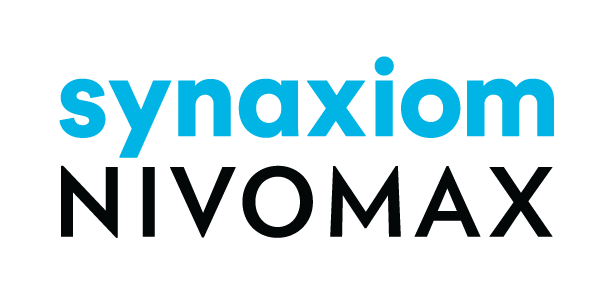How to Perform a Revision on a CDR with S1000D Data
Last Updated on July 17, 2024 | 5 min read
This guide provides step-by-step instructions for performing a revision on a Central Data Repository (CDR) with S1000D data using the NIVOMAX Builder application. Each step can be done between sessions, allowing users to return and continue with the steps yet to be completed. However, these steps should all be performed in sequence to maintain best practices.
Step 1: Update CDR
Import a Data Dispatch Note (DDN) with an Incremental Update
Refer to the guide “Updating a Central Data Repository” to perform this step.
Step 2: Process Temporary Revisions and Supporting Documents
Process supporting documents by adding or removing them as needed. Refer to the guide “Temporary Revisions and Supporting Documents” for details on processing supporting documents.
Step 3: Validate CDR Data
- Click the
Process Revision icon in the top toolbar.
- Select an existing CDR from the CDR Name drop-down list. You can also type the CDR name, and the system will autocomplete and show results for quick reference. Only S1000D CDRs will be displayed here.
- Select the Validate Data radio button.
- Click GO.
The validation process checks the CDR for the following errors:
- Malformed XML
- Missing data module files (broken references from Publication module to Data module)
- XML validation using S1000D XSD for compliance
Step 4: Generate SVG Graphics and Diagrams
- If returning to continue, click the
Process Revision icon in the top toolbar.
- Ensure the CDR you want to process is selected.
- Select the Generate SVG Graphics and Diagrams radio button.
- Click GO.
This process converts Computer Graphics Metafile (CGM) to Scalable Vector Graphics (SVG) to be used in the digital output displayed within the NIVOMAX IETP/IETM Viewers. These include embedded ICN (graphics) within Data Modules and Wiring Diagrams available in CGM format.
Step 5: Generate Metadata
- If returning to continue, click the
Process Revision icon in the top toolbar.
- Ensure the CDR you want to process is selected.
- Select the Generate Metadata radio button.
- Click GO.
In this step, the NIVOMAX Builder processes all the data modules, building the required metadata referenced within it using the Common Data Modules. Examples include applicability statements, parts and manufacturer information, and lists of abbreviations and acronyms.
Step 6: Generate HTML Outputs
- If returning to continue, click the
Process Revision icon in the top toolbar.
- Ensure the CDR you want to process is selected.
- Select the Generate HTML Outputs radio button.
- Click GO.
This step generates HTML documents for each of the data modules used to display on the NIVOMAX Viewer.
Step 7: Generate Aggregated Tables
- If returning to continue, click the
Process Revision icon in the top toolbar.
- Select the CDR you want to process from the CDR Name drop-down list.
- Select the publication to process from the Publication Name drop-down list.
- Upload the required files in the four file drop zones:
- Drag and Drop: Drag the file here to start the upload.
- Click to Browse: Click here to open your device’s file system. Choose the document you want to upload.
Note
Based on the ePubs Suppliers configuration, the list of available authorities may vary.
- PDF Document: Upload the entire report as a PDF (Book format).
- Approval Pages: Upload approval pages from authorities such as FAA, TCCA, and EASA.
- Click GO to begin processing the tables.
In this step, the NIVOMAX Builder will crawl the required data modules based on the selected publication(s) and generate the aggregated tables compliant with the NIVOMAX IETP for display within the viewer in an interactive format and attach the uploaded files.
Step 8: Generate Interactive IPDP Tables
- If returning to continue, click the
Process Revision icon in the top toolbar.
- Ensure the CDR you want to process is selected.
- Select the Generate Interactive IPDP Tables radio button.
- Click GO.
In this step, the IPDP data modules (941) are processed to generate interactive tables for display within the NIVOMAX IETP.
Step 9: Index CDR
- If returning to continue, click the
Process Revision icon in the top toolbar.
- Ensure the CDR you want to process is selected.
- Select the Index CDR radio button.
- Click GO.
This step indexes the entire CDR, including all the generated metadata, to enable search capabilities.
Step 10: Complete CDR Revision
- If returning to continue, click the
Process Revision icon in the top toolbar.
- Ensure the CDR you want to process is selected.
- Select the Complete CDR Revision radio button.
- Click GO.
Step 11: Perform Go Live
Refer to the guide “How to Perform Go Live and Publish Libraries” for details on performing this step.
By performing a Go Live, you will publish the data for the NIVOMAX Desktop, Mobile, and Network Edition Viewer applications. The NIVOMAX Web Viewer application will begin to see the updated data as soon as Step 10: Complete CDR Revision is performed.
This is the final step in the revision process. Perform this step when the revision processing is complete. Publisher users can repeat the steps above if needed during a revision, including Step 1. However, if repeating a step, you must ensure to perform all the subsequent steps in order to follow best practices.
By following these steps, you will successfully perform a revision on a Central Data Repository (CDR) with S1000D data using the NIVOMAX Builder application. Each step can be completed in separate sessions, ensuring flexibility in your workflow.

